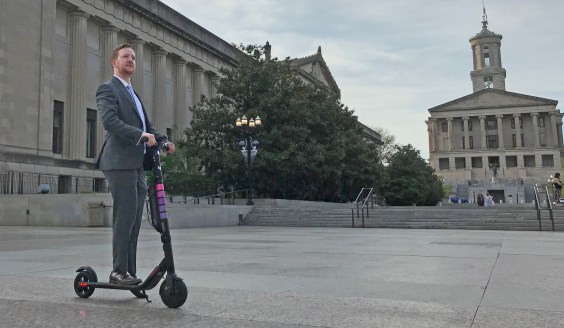This week we’re joined by Mark Perepelitza, director of sustainability at SERA Architects. Perepelitza chats with us about the meaning of sustainability, the company’s sustainability action plan, and its colorful Project Compass.
For those of you who prefer to read rather than to listen, check out an edited transcript below the audio player. For the unedited full podcast, click here.
Jeff Wood: Well, the other thing I want to ask you about is your Project Compass — something you put together that was part of the sustainability action plan. I'm curious: We've been seeing a lot of colored pinwheels out there for sustainability, health and even this idea we talked about a little bit recently on our podcast, which was the "Doughnut Economics." I don't know if you've seen this by Kate Raworth, and they all have these pinwheels with color. I even printed yours out in and put it in the front of me because I just was interested in, and I want it to be in front of me and facing me, but what makes these really intense, color-coded pinwheels the best way to convey project sustainability?
Mark Perepelitza: We have this really complicated and sometimes messy set of topics that are just trying to get our heads around so that we can think and communicate clearly. So by trying to organize it around this circular diagram, it helps convey and we can show graphically how these are interrelated, but we can also show, okay, here are these sets of topics. So we divided it into three portions: resource management, health and wellbeing, and sustainable placemaking and community, those three categories, which are then further broken down. Within that, we can show how market-rate buildings might approach it ... we can use this two-dimensional, holistic diagram to show that in these different categories. There are definitely some weaknesses to it.
Jeff Wood: We'll talk about all of it.
Mark Perepelitza: We've tried to represent everything holistically, but we have not tried to scale it. So for instance, out of this whole circle, which is made up of all these tiny wedges, there's probably 40 of them. We have two of them that actually have to do with climate impacts. But if you asked me how big of deal are climate impacts relative to other sustainability issues, I would say, 70 percent; it's huge. It's really, really big, definitely over half. So this is not trying to scale how important each topic is. This is just to get the whole deck on the table so we can see it. Then we can start talking about what's most important for each project.
Jeff Wood: When you first started thinking about the compass, how did you start to develop the framing of putting it together and making sure that everything was involved — and how hard was it to come up with all the topic areas? I imagine there's probably some topic areas that are missing still. ...It's probably an ever-evolving project.
Mark Perepelitza: Exactly. We have blank versions of this compass that we use in certain cases to allow us the flexibility of changing the titles. We have a version that we've done recently where, instead of the three primary categories, we ended up with a fourth category working with a Native American group where they had a bunch of tribal viewpoints around spirituality that we realized should really be represented in here. So it gets used in a bunch of different ways. The evolution of this is actually kind of interesting. So at SERA, we have two different sustainability groups. We have one professional team that I run, that we hire staff members to help support sustainable project work and pursue work.
But we also have a voluntary group — where anybody in the office who's interested can participate. The sustainable action committee also takes on initiatives. So it's pretty wide open. This actually came out as an initiative from that sustainable action committee, not so much from the so-called professional group, which we call our sustainable resources group. These two groups work pretty closely together; there is a lot of overlap in terms of individuals, but it started from our annual sustainability action celebration. One year our theme was on resilience, and we had created a graphic to study resilience.
We had used this round circular diagram with the three broad categories, and one of the team members from the action committee said, wow, that's really interesting. It seems like we could go further with that, in part because sometimes we get really hung up on certification programs and they can become a little too much of a box-checking exercise, where there are a lot of categories and very explicit requirements. So sometimes people get bogged down or just like want nothing to do with them because they're frustrated by them. So this was a way of saying, okay, let's ignore all of the certifications for right now. Let's just look at the broader categories, the bigger ideas behind them and talk about regardless of whether or not a project is going to pursue certification or not, all this stuff is still relevant. So let's create this tool. So it evolved from that group. I definitely have to give them credit.






